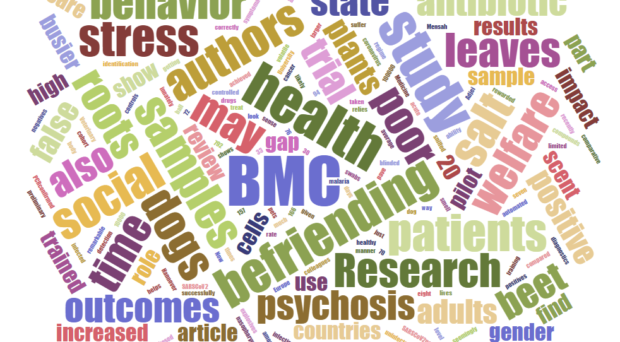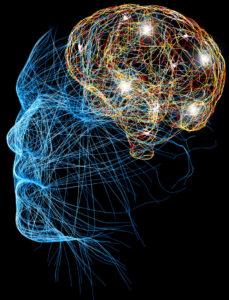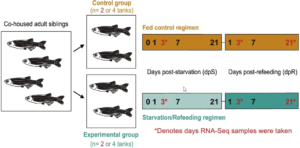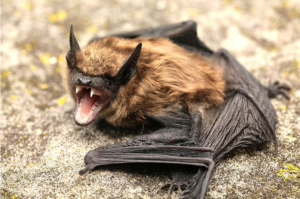
BMC Infectious Diseases – Post-COVID-19 syndrome. SARS-CoV-2 RNA detection in plasma, stool, and urine in patients with persistent symptoms after COVID-19

More than two years into the COVID-19 pandemic there are still many open questions, including why some patients experience persistent symptoms weeks after first testing positive. In their recently published study researchers from the Gregorio Marañon Microbiology ID COVID 19 Study Group evaluate patients who report fatigue, muscle pain, dyspnea, inappropriate tachycardia and low-grade fever at least four weeks following initial diagnosis with SARS-CoV-2. Their results show that more than half of these patients experienced only mild COVID-19 symptoms during their initial illness but still developed lasting symptoms. A significant number had detectable SARS-CoV-2 RNA in plasma, urine or stool samples several weeks post infection. The study further found that antiviral treatment strategies may be beneficial for patients with this possible systemic viral persistence.
BMC Genomics – Starvation causes changes in the intestinal transcriptome and microbiome that are reversed upon refeeding
The importance of the microbiome on survival and fitness of animals has been increasingly recognised in the scientific community and in recent years we have seen a wealth of publications on different microbial communities within humans, mice and other animals. The intestinal microbiome in particular is highly dependent on the feeding status of the host organism and different phyla are differently affected by starvation periods. To study how starvation and refeeding impact on the composition of the microbiome as well as on host gene expression, researchers from Duke University used zebrafish in this recent BMC Genomics publication. Interestingly, they find that the abundance of two core microbiome genera of zebrafish – Vibrio and Plesiomonas – react in opposite ways to starvation, with Vibrio bacteria increasing and Plesiomonas showing reductions. Concurrently, transcriptomics data of the host genes shows drastically altered expression of ribosome biogenesis early in starvation, followed by decreased expression of genes responsible for antiviral immunity as well as lipid transport in later stages. Both host transcription and microbiome were shown to recover quickly within only three days of refeeding.
BMC Zoology – One or two pups – optimal reproduction strategies of common noctule females
Reproductive strategy describes how different animal species balance the trade-off between energetic costs and mortality associated with reproduction to maximise survival of both parents and offspring. European insectivorous bats such as the common noctule (Nyctalus noctula) make use of delayed fertilisation, where sperm is stored in the female reproductive organs during hibernation. In their recent publication, researchers from Brno assess what factors determine whether a female noctule gives birth to a single neonate or to twins, finding that high progesterone levels during early stages of gestation are a good indicator for successful twin pregnancies. Additionally, their results show that the longer the hibernation period, the shorter the gestation period. The authors conclude that females can optimise their thermoregulatory behaviour and are able to manipulate their litter size.
BMC Musculoskeletal Disorders – Muscle architecture, growth, and biological Remodelling in cerebral palsy: a narrative review

The last years have seen immense progress in researching musculoskeletal impairments in patients with cerebral palsy (CP). Many CP patients show significant reduction in muscle volume, often with shorter muscles and fewer sarcomeres. Satellite cell numbers are also often reduced significantly leading to impaired muscle regeneration and thus stiffer and weaker muscles. Based on these differences, CP patients often participate less in physical activity which in turn increases their risk for secondary sarcopenia (muscle loss). Clinical phenotypes of cerebral palsy are very heterogeneous requiring individual treatment strategies. In their narrative review, Handsfield and colleagues summarise recent findings on the pathology and treatment strategies of CP, as well as highlighting areas where more work is needed.
BMC Medical Ethics – Indicators and criteria of consciousness: ethical implications for the care of behaviourally unresponsive patients

How can healthcare professionals assess consciousness in unresponsive patients to avoid misdiagnosis and offer the highest standard of care? In a recent article in BMC Medical Ethics researchers assess the usefulness of different indicators of consciousness originally developed for determining the level of consciousness in artificial intelligence and animals for use in human patients, such as individuals in comas. Among these indicators, the authors discuss goal-directed behaviour, brain anatomy and physiology, psychometrics and meta-cognitive judgment and episodic memory. As the diagnosis of consciousness has important ethical dimensions, the researchers emphasise the need for a gold standard in detecting consciousness and the requirement for refined taxonomy of disorders of consciousness.


Comments